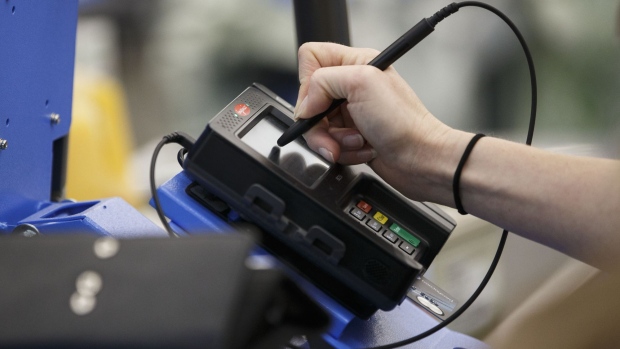Jan 13, 2023
US Banks See Consumers Piling On Debt, Boosting Bottom Lines
, Bloomberg News

(Bloomberg) -- US banks see tougher times ahead for consumers. That may not be so bad for the banks.
The heads of the nation’s four largest lenders — JPMorgan Chase & Co., Bank of America Corp., Wells Fargo & Co. and Citigroup Inc. — took turns in calls Friday describing customers who are drawing down savings, piling up debt on credit cards and in a growing number of cases struggling to make their payments.
But with many still keeping up, the swelling loan balances are good for lenders. And so far, most consumers have “plenty of cushion left,” Bank of America Chief Executive Officer Brian Moynihan told analysts.
That mixed picture of a shifting economy initially rattled shareholders Friday morning as they zeroed in on a surge in souring credit-card loans that threatens to undermine banks’ earnings from lending this year. But stock prices soon recovered as executives assured analysts and investors that their firms will still make hefty profits from more lending.
“While the macro and geopolitical environment remains uncertain, we feel very good about our asset quality, exposures and reserve levels,” Citigroup Chief Financial Officer Mark Mason said.
Questions about the economy and outlook dominated the banks’ conference calls, many of which began as their stocks were dragging on the broader market. By 4 p.m. in New York, Wells Fargo was up 3.3%, leading major US lenders higher. JPMorgan and Bank of America each gained more than 2%, with Citigroup up 1.7%.
Altogether, the four lenders wrote off $2.29 billion in bad credit-card loans in the last quarter of 2022, a 54% jump from a year earlier.
The four banks collectively set aside $6.18 billion in provisions for bad loans during the fourth quarter — a reversal from a year earlier when the group released past stockpiles. Altogether, the lenders added $2.8 billion in reserves in the quarter.
NII Forecasts
JPMorgan, Wells Fargo and Citigroup all forecast net interest income that will be lower than what analysts had predicted for the full year. Bank of America’s forecast for that income stream in the first quarter was below estimates. The figures reflect what banks earn on loans, minus the interest they put out on deposits.
Expenses ticked higher, as banks confronted inflation that’s already prompted some including Goldman Sachs Group Inc. to start cutting staff.
Total costs at the four largest US banks rose 5.4% to $298.7 billion for the year, marking a $15 billion increase. That was the biggest jump in over a decade, according to data compiled by Bloomberg.
Citigroup failed to curb expenses as much as analysts predicted. While JPMorgan’s 6% jump in costs wasn’t as severe as what analysts predicted, the firm expects increases in labor inflation, its executives said on a call.
--With assistance from Katherine Doherty and Hannah Levitt.
(Updates with increase in reserves for bad loans in eighth paragraph.)
©2023 Bloomberg L.P.





